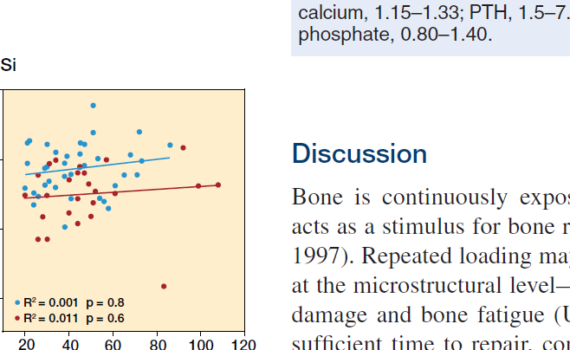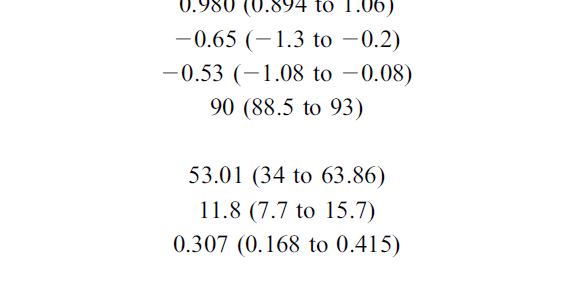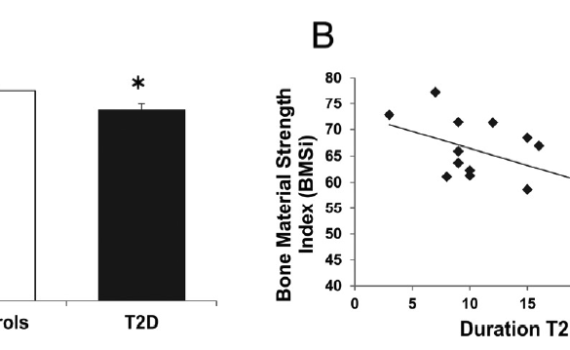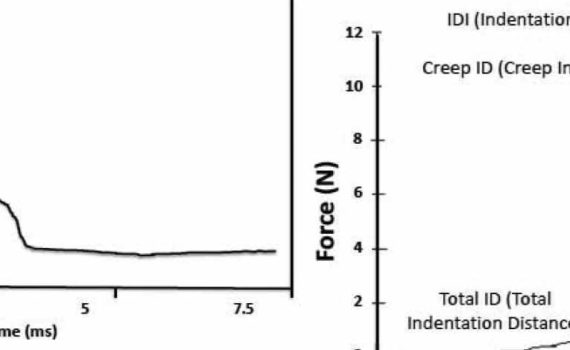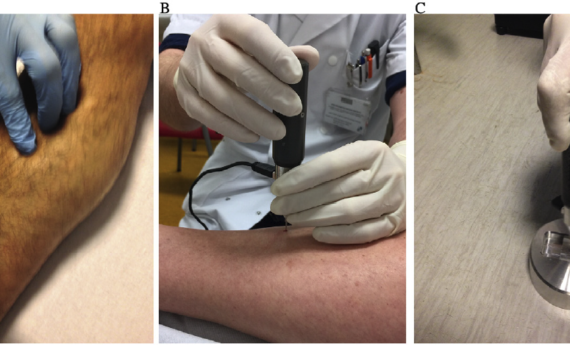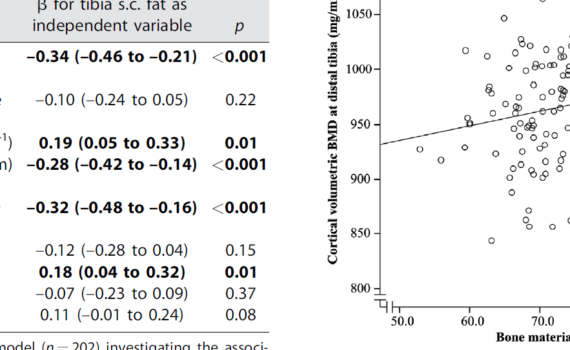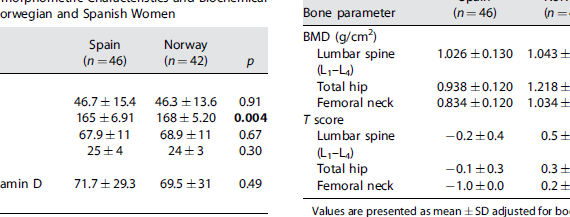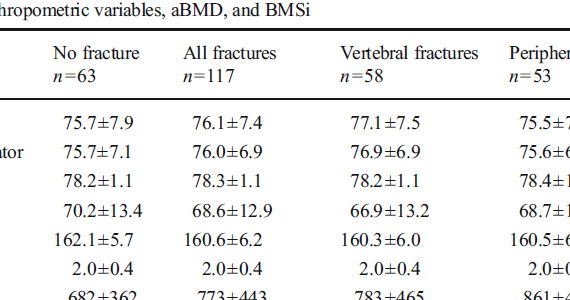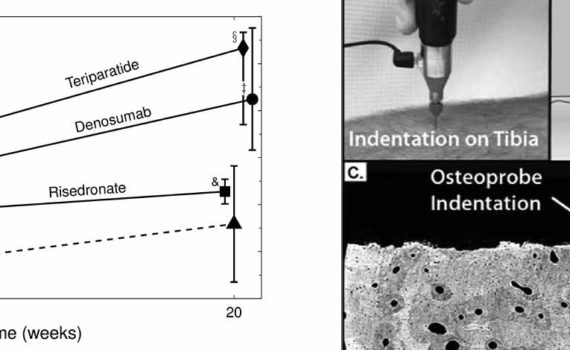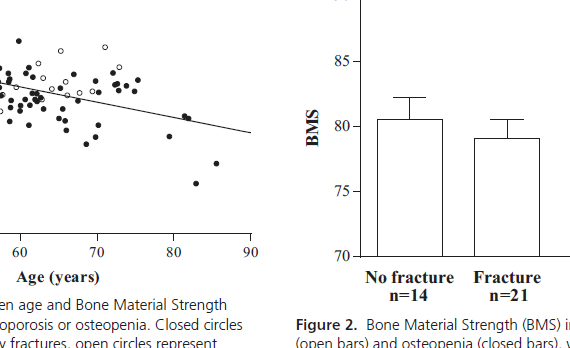Abstract Background and purpose — Bone fragility is determined by bone mass, bone architecture, and the material properties of bone. Microindentation has been introduced as a measurement method that reflects bone material properties. The pathogenesis of underlying stress fractures, in particular the role of impaired bone material properties, is still […]
Monthly Archives: July 2018
Abstract Low bone mineral density (BMD) in HIV-infected individuals has been documented in an increasing number of studies. However, it is not clear whether it is the infection itself or the treatment that causes bone impairment. Microindentation measures bone material strength (Bone Material Strength index) directly. We recruited 85 patients, […]
Abstract CONTEXT: Skeletal deterioration, leading to an increased risk of fracture, is a known complication of type 2 diabetes mellitus (T2D). Yet plausible mechanisms to account for skeletal fragility in T2D have not been clearly established. OBJECTIVE: The objective of the study was to determine whether bone material properties, as […]
Abstract Densitometry and imaging techniques are currently used in clinical settings to measure bone quantity and spatial structure. Recently, Reference Point Indentation has opened the possibility of directly assessing the mechanical characteristics of cortical bone in living individuals, adding a new dimension to the assessment of bone strength. Impact microindentation […]
Abstract Impact microindentation is a novel method for measuring the resistance of cortical bone to indentation in patients. Clinical use of a handheld impact microindentation technique is expanding, highlighting the need to standardize the measurement technique. Here, we describe a detailed standard operation procedure to improve the consistency and comparability of the measurements […]
Abstract Obesity is associated with increased risk of fractures, especially at skeletal sites with a large proportion of cortical bone, such as the humerus and ankle. Obesity increases fracture risk independently of BMD, indicating that increased adipose tissue could have negative effects on bone quality. Microindentation assesses bone material strength […]
Abstract Hip fracture rates in Norway rank among the highest in the world, more than double that of Spanish women. Previous studies were unable to demonstrate significant differences between the two populations with respect to bone mass or calcium metabolism. In order to test whether the difference in fracture propensity […]
Abstract Reference point indentation is a novel method to assess bone material strength index (BMSi) in vivo. We found that BMSi at the mid-tibia was weakly associated with spine and hip areal bone mineral density but not with prevalent fracture in a population-based cohort of 211 older women. INTRODUCTION: Reference […]
Abstract Glucocorticoids, widely used in inflammatory disorders, rapidly increase bone fragility and, therefore, fracture risk. However, common bone densitometry measurements are not sensitive enough to detect these changes. Moreover, densitometry only partially recognizes treatment-induced fracture reductions in osteoporosis. Here, we tested whether the reference point indentation technique could detect bone […]
Abstract CONTEXT: Bone mineral density (BMD) does not fully capture fracture risk as the majority of fractures occur in patients with osteopenia, suggesting that altered bone material properties and changes in microarchitecture may contribute to fracture risk. OBJECTIVE: This study aimed to evaluate the relationship between bone material strength (BMS), […]

